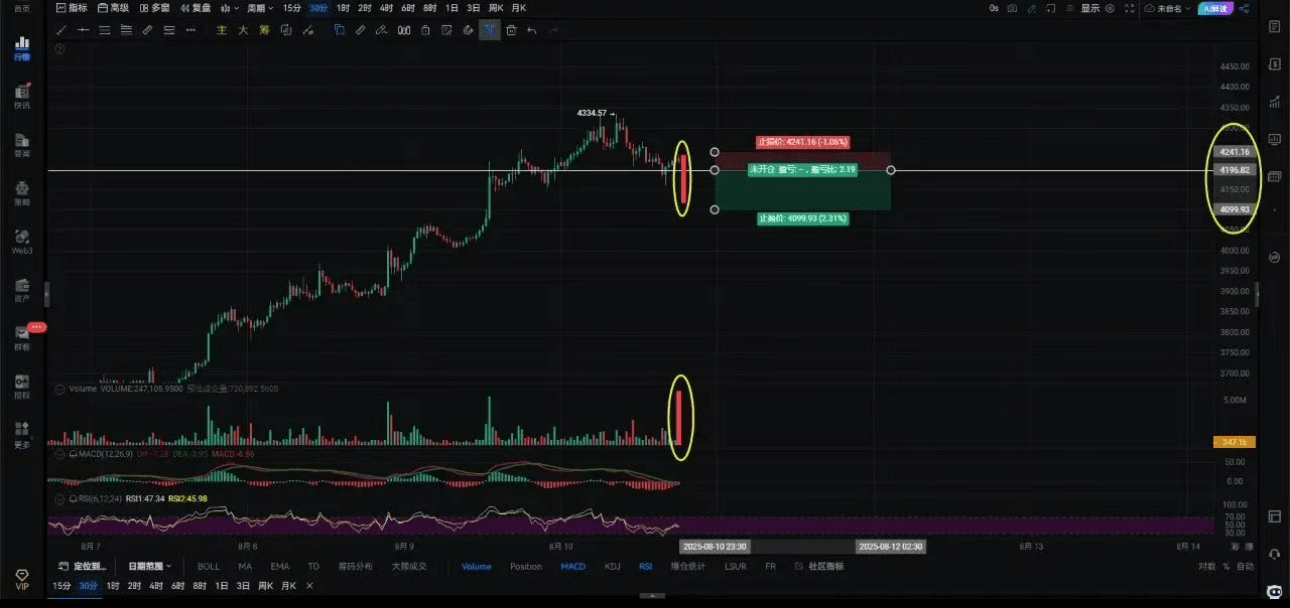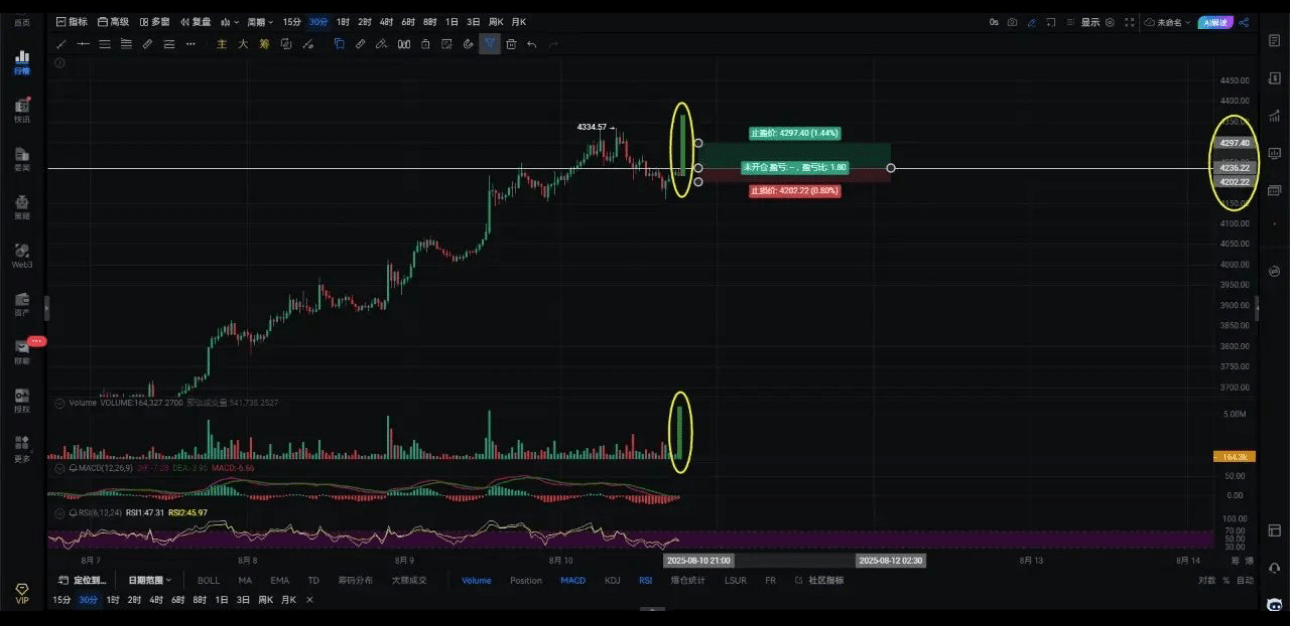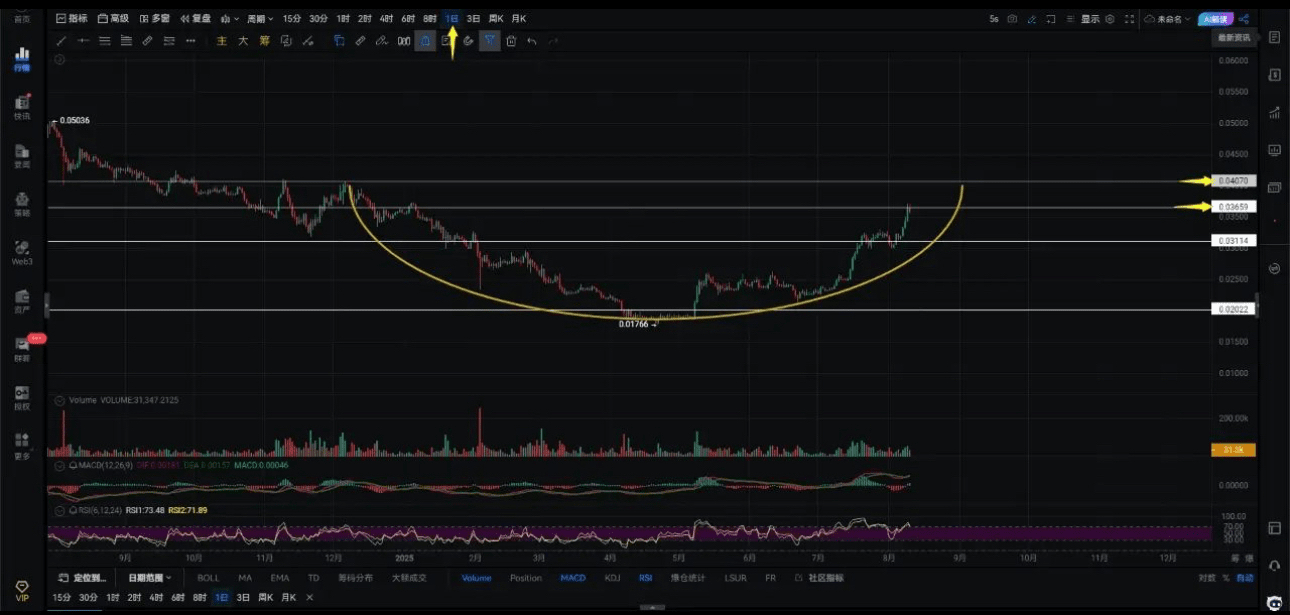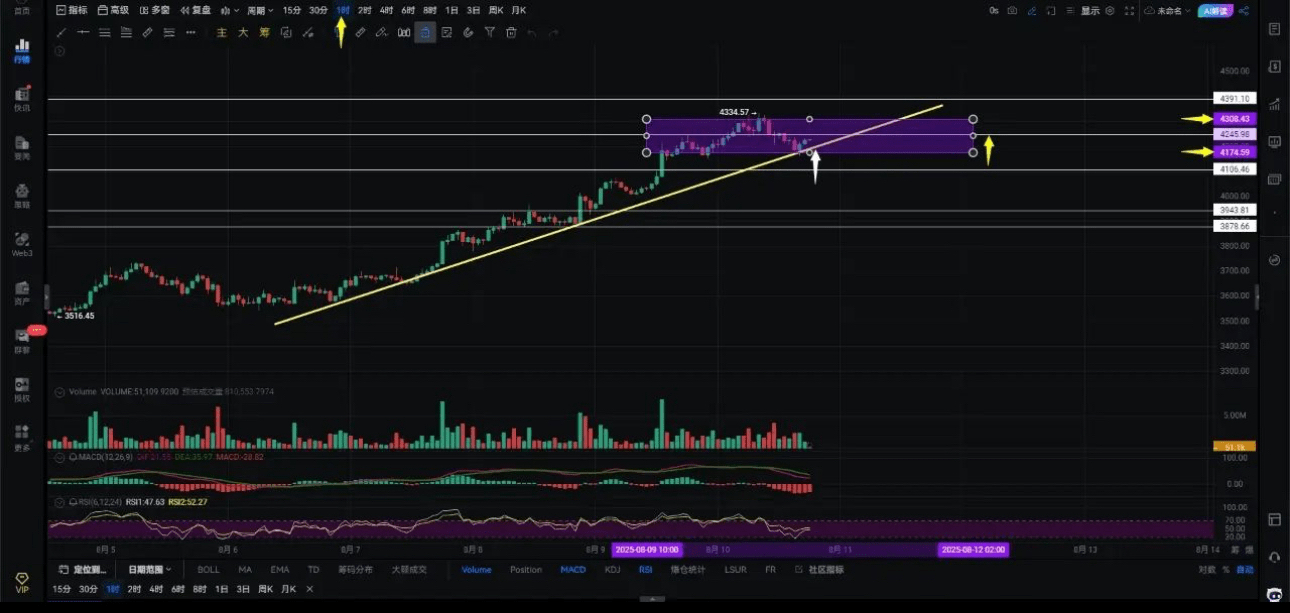1. A wake-up call for the 'FOMO frenzy': Staying sober is more important than being optimistic.
If it rises, look bullish; if it falls, look bearish. This following-the-trend mentality is destined to become market 'chives'—in the afternoon, someone shouted that the second contract could rise to 5000, clearly dazzled by a short-term rally. Not to mention that there is currently no interest rate cut stimulus or liquidity injection; blindly being bullish based solely on the weekend's 'abnormal rally' essentially serves as a 'liquidation buyer' for the operators. The core of trading is to remain sober: when everyone is shouting 'it can still rise,' it is precisely the time to be wary of the risk of being lured into buying; after all, the market never lacks opportunities, but it lacks the resolve not to be swept away by emotions.
2. Hourly Level Box Oscillation: The midpoint is the dividing line between bulls and bears.
The second contract is currently in an hourly box oscillation between 4308-4174 USD, and has broken below the midpoint of the box—this is a key signal for short-term strength and weakness:
• No Breakout, No Rise: Before breaking the box's midpoint and upper boundary (4308 USD), do not fantasize about a 'continued rally'; it is highly likely to oscillate around the upper and lower boundaries of the box.
• Breakout Risk Warning: If it falls below the yellow trend line + lower boundary of the box (4174 USD), the pullback space opens up, with targets looking successively at 4106→3943→3878 USD (specific depth needs to be verified as we go, no preset endpoint).
3. Key Point Trading Strategy: Volume Determines Direction, Stop Loss on Breakout
• Long Strategy:
1. Volume breaks above 4236 USD → short-term test for long (quick in and out, cautious due to box pressure);
2. Hourly level stabilizes above 4234 USD → targets 4276→4309 USD (must break the upper boundary of the box to be valid);
3. Core Premise: The box oscillation pattern must be broken; otherwise, long positions are easily trapped.
• Short Strategy:
1. Volume breaks below 4196 USD → short on the right side, volume is the verification of the effectiveness of selling pressure;
2. 4-hour level breaks below 4158 USD → pullback confirmed, look down to 4106→3943→3878 USD;
3. Key Stop Loss Line: If it falls below 4106 USD, the pullback becomes a certainty; 'no one can stop it'; do not attempt to catch the bottom at this time.
4. The exchange rate is a 'barometer': the logic of the breakthrough and pullback of the daily rounded bottom.
One of the key drivers of the recent rise and fall of the second contract is its exchange rate (relative price to the first contract):
• The daily level exchange rate is currently in a 'rounded bottom' pattern, and is currently obstructed at the key level of 0.03659—if broken, the exchange rate will aim for 0.04070, and the second contract will be stronger;
• If it does not rise above 0.03659, the exchange rate will start a daily pullback, and the second contract is likely to weaken simultaneously ('weak exchange rate, second contract weaker than the exchange rate'). The correlation between the exchange rate and the second contract is an important anchor point for judging strength and weakness.
Summary: Don't be kidnapped by 'fantasy'; use the box and exchange rate to determine operations.
The current core contradiction of the second contract is 'the lack of fundamental support for the weekend rally + the box oscillation not broken'; operations must closely adhere to: no breakthrough of the box, no upward movement; be cautious if the exchange rate is obstructed, and do not hesitate to stop loss on breakout. Remember: the market specializes in correcting all 'assumptions'; only those who remain sober can laugh last.
Meeting adjourned.





